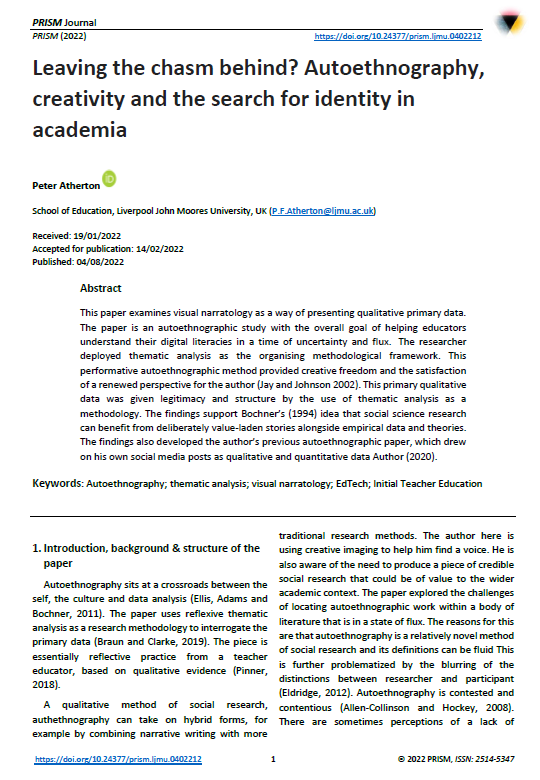Leaving the chasm behind: Autoethnography, creativity and the search for identity in academia
DOI:
https://doi.org/10.24377/prism.ljmu.0402212Keywords:
autoethnography, thematic analysis, visual narratology, edtech, initial teacher educationAbstract
This paper examines visual narratology as a way of presenting qualitative primary data. The paper is an autoethnographic study with the overall goal of helping educators understand their digital literacies in a time of uncertainty and flux. The researcher deployed thematic analysis as the organising methodological framework. This performative autoethnographic method provided creative freedom and the satisfaction of a renewed perspective for the author (Jay and Johnson 2002). This primary qualitative data was given legitimacy and structure by the use of thematic analysis as a methodology. The findings support Bochner’s (1994) idea that social science research can benefit from deliberately value-laden stories alongside empirical data and theories. The findings also developed the author’s previous autoethnographic paper, which drew on his own social media posts as qualitative and quantitative data Atherton (2020b).
Downloads

Downloads
Published
Issue
Section
License
Copyright (c) 2022 Pete Frederick Atherton

This work is licensed under a Creative Commons Attribution-NonCommercial-NoDerivatives 4.0 International License.
Authors retain copyright and grant the journal the right of first publication with the work.
The version of the article published as part of this issue is licensed under a Creative Commons Attribution-NonCommercial-NoDerivatives 4.0 International Licence and allows others to read, download, copy, distribute, print, search, link to the full text of the first version of this article, or to use it for any other lawful purpose in accordance with the license. The author maintains copyright for the article published in this journal.
This journal provides immediate open access to its content and has no submission or publication fees.


